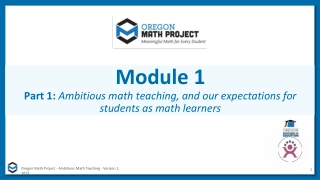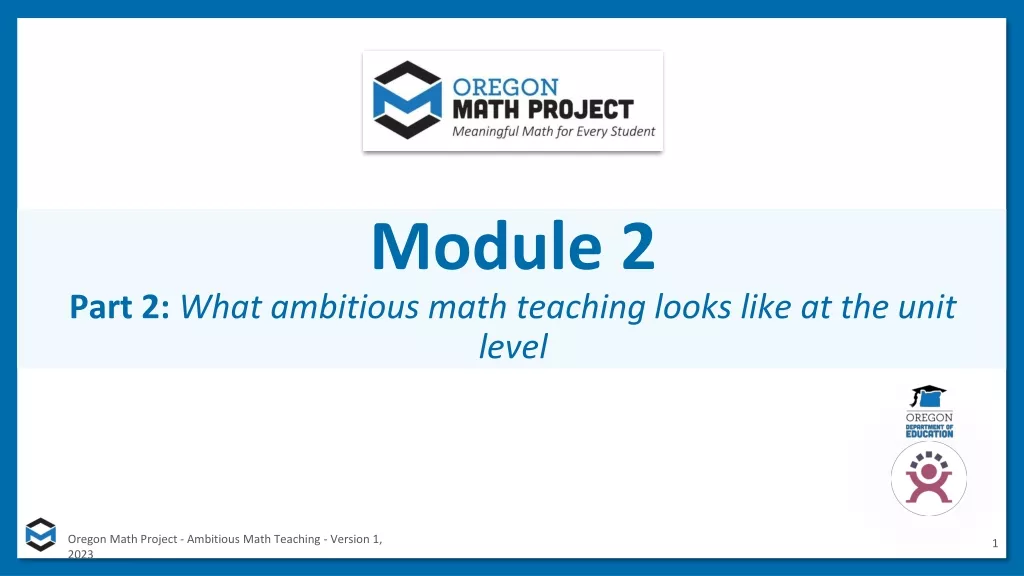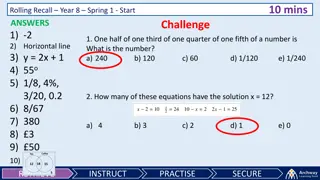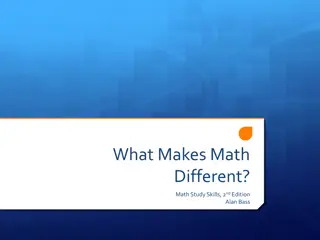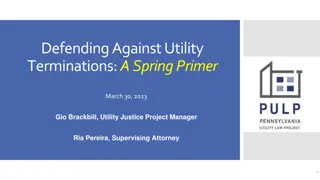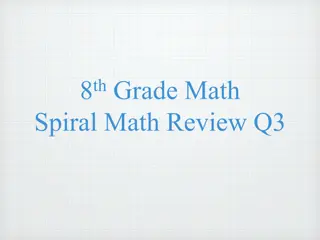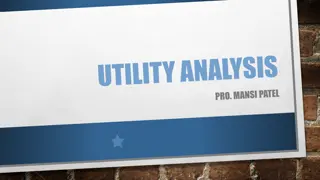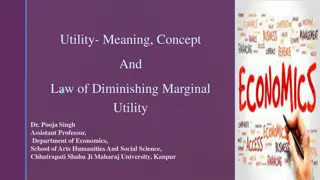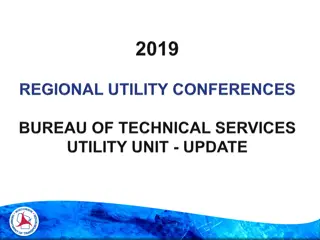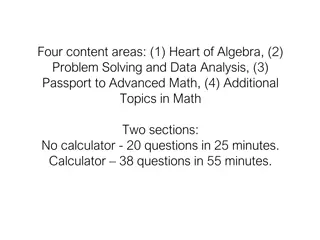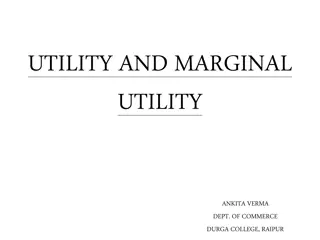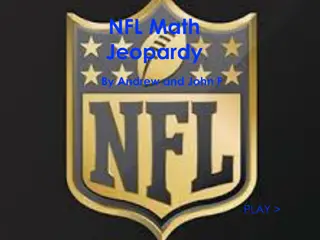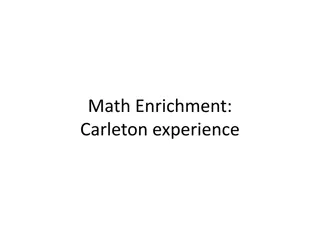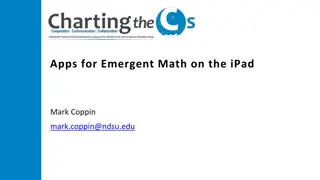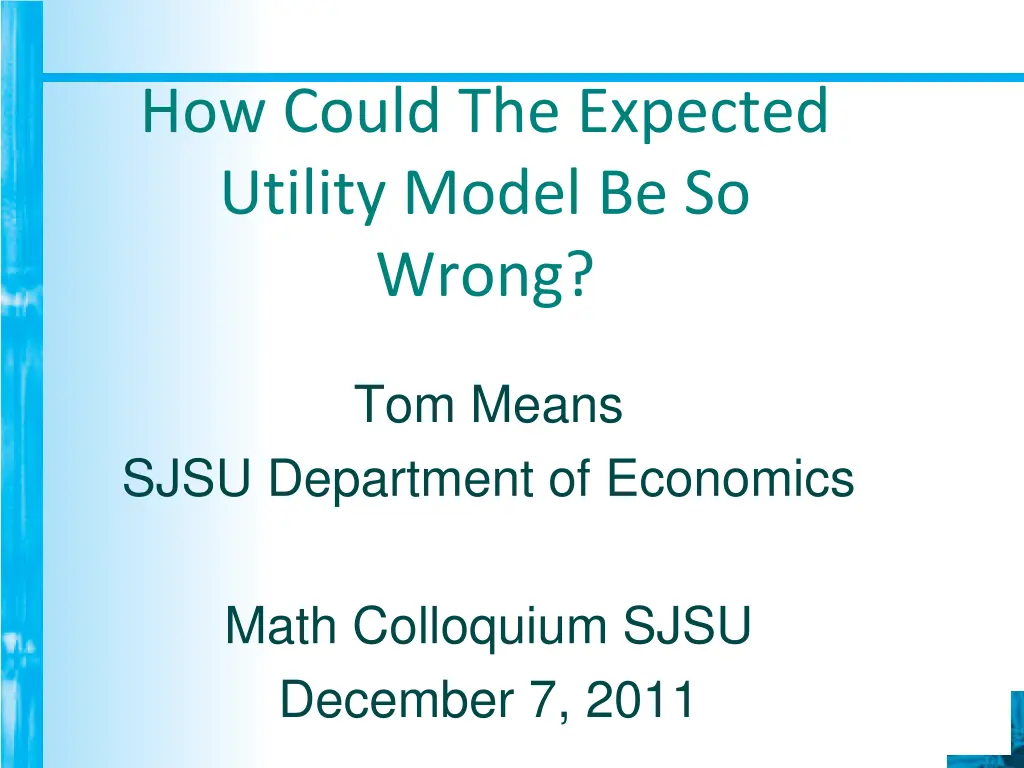
Understanding the Flaws in the Expected Utility Model
Explore the limitations of the Expected Utility Model in decision-making under uncertainty, risk aversion, and risk preference. Discover how individuals may deviate from expected utility maximization due to various factors like attitudes towards risk.
Download Presentation

Please find below an Image/Link to download the presentation.
The content on the website is provided AS IS for your information and personal use only. It may not be sold, licensed, or shared on other websites without obtaining consent from the author. If you encounter any issues during the download, it is possible that the publisher has removed the file from their server.
You are allowed to download the files provided on this website for personal or commercial use, subject to the condition that they are used lawfully. All files are the property of their respective owners.
The content on the website is provided AS IS for your information and personal use only. It may not be sold, licensed, or shared on other websites without obtaining consent from the author.
E N D
Presentation Transcript
How Could The Expected Utility Model Be So Wrong? Tom Means SJSU Department of Economics Math Colloquium SJSU December 7, 2011
The Expected Utility Model. 1 Decision Making under conditions of uncertainty Choose option with highest expected value. 2 Utility versus Wealth. (St. Petersburg paradox) Flip a fair coin until it lands heads up. You win 2ndollars. E(M) = (1/2)($2) + (1/4)($4) + . = 3 Ordinal versus Cardinal Utility 2
The Expected Utility Model. 4 Maximize Expected (Cardinal) Utility. E[U(M)] = Pi U(Mi) (The Theory of Games and Economic Behavior, John von Neumann and Oskar Morgenstern 3
Attitudes Toward Risk. 1 Comparing E[U(M)] with U[E(M)] Risk-Aversion; E[U(M)] < U[E(M)] Risk-Neutrality; E[U(M)] = U[E(M)] Risk-Seeking; E[U(M)] > U[E(M)] 4
Risk Aversion; X = { 1-P, $20; P, $0} Utility of dollars U($) U(20) e $4 e 18 16 20 Dollars 0 Tom is indifferent between not buying insurance and having an expected utility equal to height e e, and buying insurance for a premium of $4 and having a certain utility equal to the value of the utility function at an income of $16. 5
Risk-preferring Utility of dollars U($) b U(38) d .10(18)+.90(38) U(18) b d 36 18 38 Dollars 0 Kathy will not sell insurance to Tom at a zero price because she prefers a certain utility equal to height b b rather than an expected utility equal to height d d. 6
Willingness to sell insurance Utility of dollars U($) U(38) k b U(18) k b 38 18+1.5=19.5 38+1.5=39.5 Dollars 0 18+ 38+ Kathy is indifferent between not selling insurance and having a certain utility equal to height b b, and selling insurance at a premium of $1.50 and having an expected utility equal to height k k. 7
Measuring Risk Aversion - U[E(M) ) = E[U(M)] - Arrow/Pratt Measure -( 2/2)U (M)/U (M) - Absolute Risk Aversion r(M) = U (M)/U (M) - Relative Risk Aversion r(M) = M r(M) 8
Some Observations - Individuals buy insurance (car, life, fixed rate mortgages, etc) and exhibit risk aversion - Risk-averse individuals go to casinos. - Freidman/Savage article - Ellsberg, Allais, Kahneman/Taversky 9
How Could Expected Utility Be wrong? E[U(M)] = Pi U(Mi) Violations of probability rules Conjunction law The Linda problem. P(A & B) > P(A), P(B) (Daniel Kahneman and Amos Tversky) Ambiguity aversion The Ellsberg Paradox (known vs. ambiguous distribution) Base rates Nonlinear probability weights Framing 10
Framing Problem One. Pick A or B A: X = { P = 1, $30; 1-P = 0, $0} B: X = {0.80, $45; 0.20, $0}
Framing Problem Two. Stage One. X = { 0.75, $0 and game ends; 0.25, $0 and move to second stage} Stage Two. Pick C or D. C: X = { P = 1, $30; 1-P = 0, $0} D: X = {0.80, $45; 0.20, $0}
Framing Problem Three. Pick E or F E: X = {0.25, $30; 0.75, $0} F: X = {0.20, $45; 0.80, $0} X + C = E X + D = F
How Could Expected Utility Be wrong? Violations of probability rules Constructing values Absolute or Relative, Gains versus Losses Choosing an option to save 200 people out of 600. Choosing an option where 400 out of 600 people will die. 14
How Could Expected Utility Be wrong? Violations of probability rules The reflection effect. Do people value gains different than losses? Prospect Theory. Chose between A or B A: X = { 1.0, $240; 0.0, $0} B: X = {0.25, $1000; 0.75, $0} Chose between C or D C: X = { 1.0, $-750; 0.0, $0} D: X = {0.75, $-1000; 0.25, $0} 19
How Could Expected Utility Be wrong? Violations of probability rules The reflection effect. Do people value gains different than losses? Prospect Theory. Chose between E or F E: X = { 0.25, $240; 0.75, -$760} F: X = { 0.25, $250; 0.75, -$750} 20
How Could Expected Utility Be wrong? Violations of probability rules The reflection effect. Do people value gains different than losses? Prospect Theory. A preferred to B (84%) D preferred to C (87%) F preferred to E (100%) 21
How Could Expected Utility Be wrong? Violations of probability rules The reflection effect. Do people value gains different than losses? Prospect Theory. A(84%) + D (87%) = E B + C = F 22
How Could Expected Utility Be wrong? Violations of probability rules Scaling of Probabilities. Chose between A or B A: X = { 1.0, $6000; 0.0, $0} B: X = {0.80, $8000; 0.20, $0} Chose between C or D C: X = { 0.25, $6000; 0.75, $0} D: X = { 0.20, $8000; 0.80, $0} 23
How Could Expected Utility Be wrong? Violations of probability rules Scaling Probabilities. A preferred to B and D preferred to C E[U(A)] > E[U(B)] implies E[U(C)] > E[U(D)] E[U(A)]/4 > E[U(B)]/4 and add 0.75U(0) to both sides to show E[U(C)] > E[U(D)] 24
How Could The Expected Utility Model Be So Wrong? Questions/Comments 25

